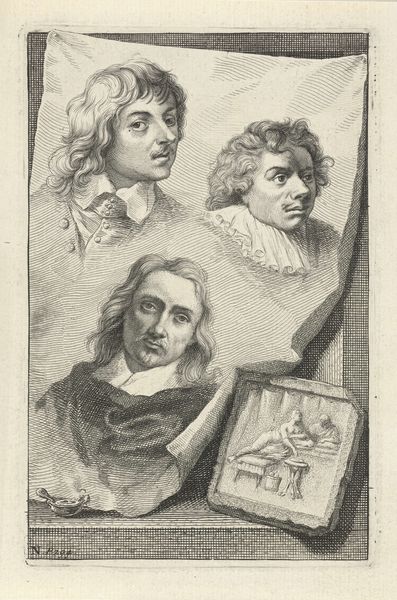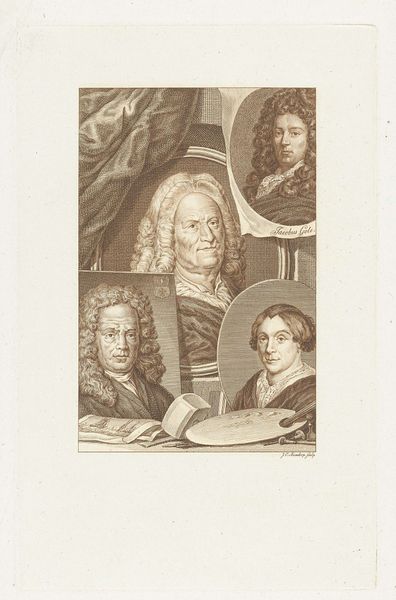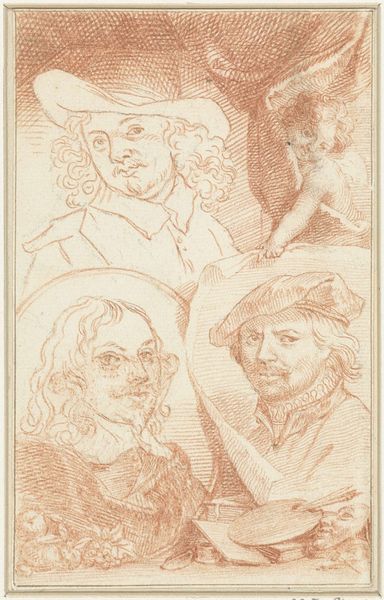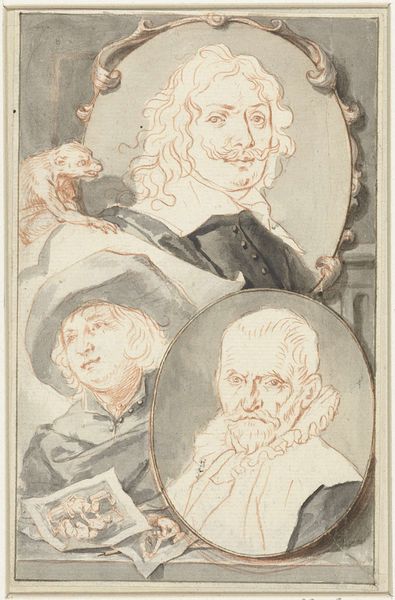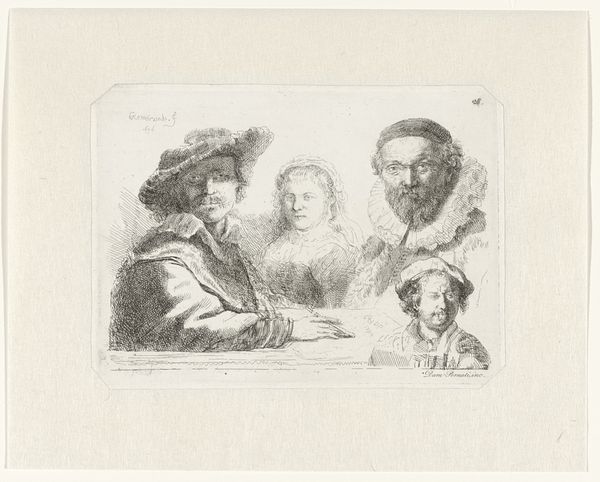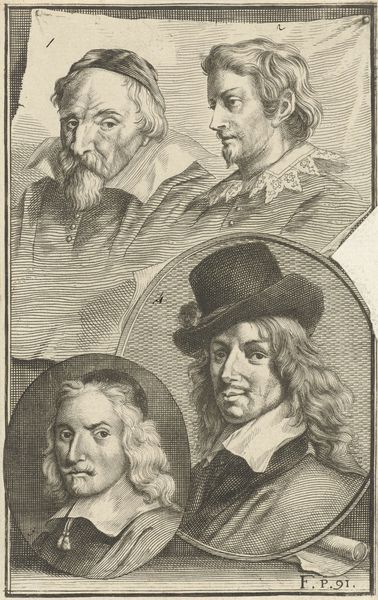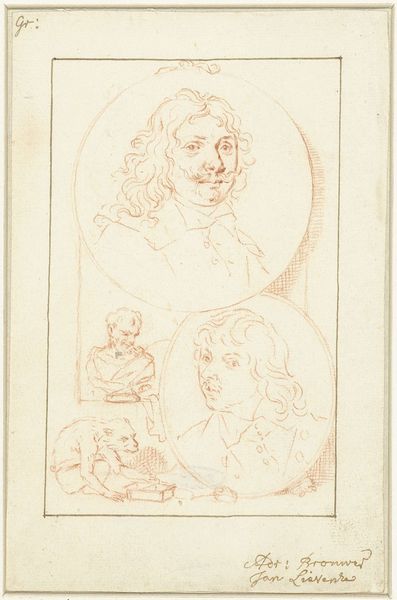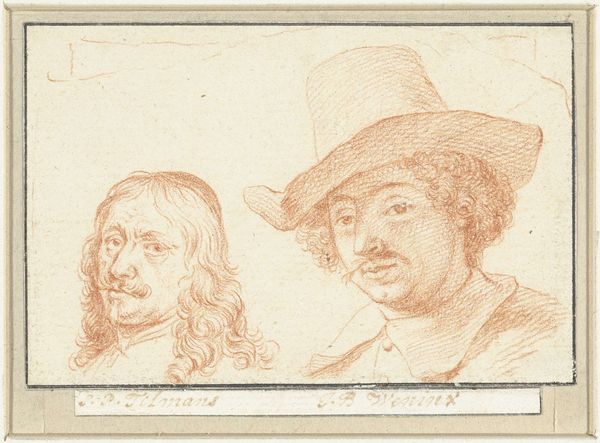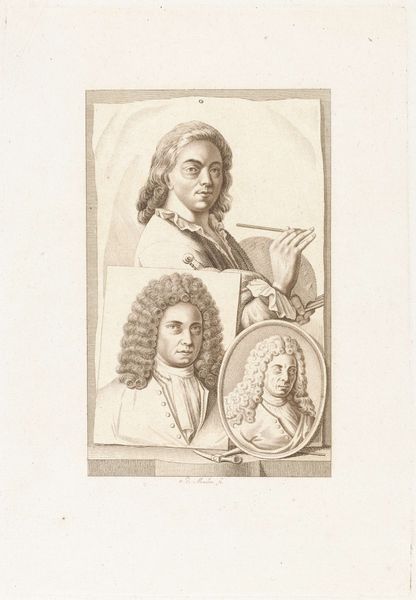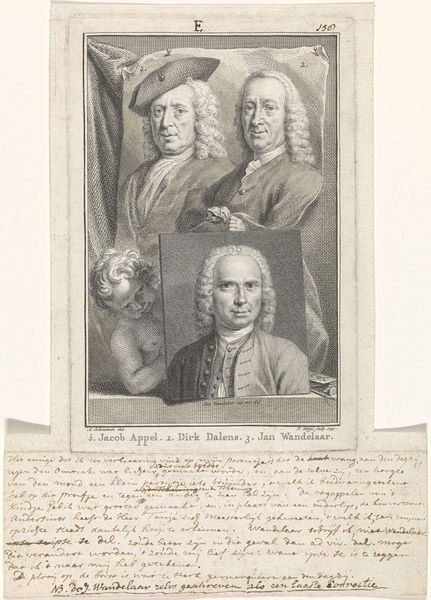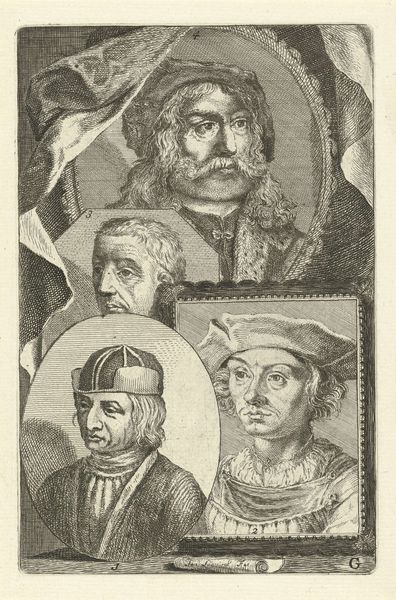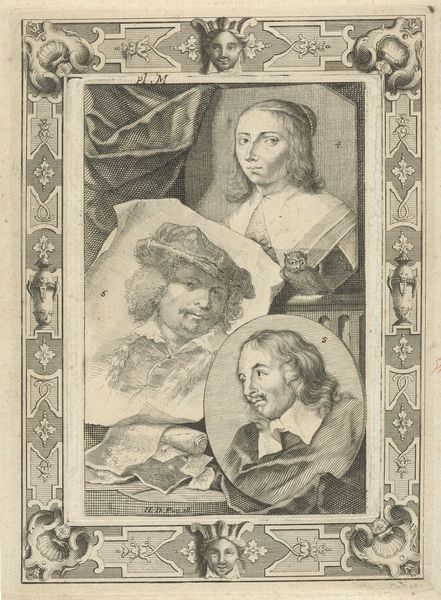
Portretten van Cornelis Visscher, Jan de Visscher, Richard Brakenburg en Quiringh Gerritsz. van Brekelenkam 1815
0:00
0:00
Dimensions: height 231 mm, width 144 mm
Copyright: Rijks Museum: Open Domain
Curator: Hmm, there's a collection of faces vying for my attention, all crammed together. Something about that big hat, though—it practically steals the show! Editor: Yes, it’s Jacob Ernst Marcus’ "Portraits of Cornelis Visscher, Jan de Visscher, Richard Brakenburg and Quiringh Gerritsz. van Brekelenkam," created around 1815. The engraving, part of the Rijksmuseum’s collection, captures the likeness of these individuals, but it almost feels as though it goes beyond just representation. Curator: Representation... that’s one word for it. Those faces are like looking into slightly distorted mirrors. There’s a touch of humor in the execution. Caricature almost. Is that a reflection on the sitters, or more a reflection of the social perspective of the artist, I wonder. Editor: It’s interesting you say that, considering that Jacob Ernst Marcus was active during a time when artistic patronage and public reception were changing rapidly. While ostensibly academic in style, these prints catered to a growing middle class interested in genre scenes and, yes, even gentle caricatures of public figures or artistic personalities. It was all part of forging a shared visual culture. Curator: A shared visual culture that possibly chuckled at the expense of its creative elite? Makes you think. Those slight exaggerations could tell stories that formal portraiture wouldn’t dare touch. Perhaps it’s even challenging this stuffy notion of 'high art'. What's compelling here is that these artists, known for Baroque brilliance, get the print treatment – suddenly accessible, but maybe subtly critiqued. Editor: Absolutely. Reproducing portraits through engravings democratized art, bringing it to a wider audience. However, the act of choosing *which* artists to portray and *how* becomes a commentary in itself. Consider the setting; this work appearing in the early 19th century hints at how earlier artistic masters were being reimagined or perhaps even co-opted within new social frameworks. It’s like saying, "We admire these figures, but we also have a different, more familiar way of seeing them." Curator: So, beyond just immortalizing their faces, this piece throws these artists into the social arena for discussion. Nice hat or no nice hat, each character quietly whispers of status, ambition, and how perception, ultimately, plays the largest part. Editor: Precisely, it becomes more than a set of likenesses—it’s a document reflecting changing tastes and social structures. It reveals as much about its time as it does about the individuals portrayed. Curator: Right, art looking back at art…layers within layers. I will never look at an old hat quite the same way again!
Comments
No comments
Be the first to comment and join the conversation on the ultimate creative platform.
